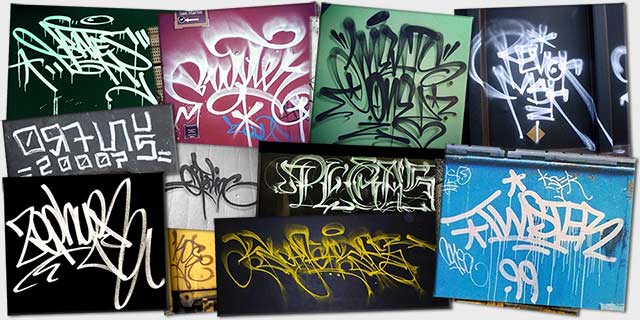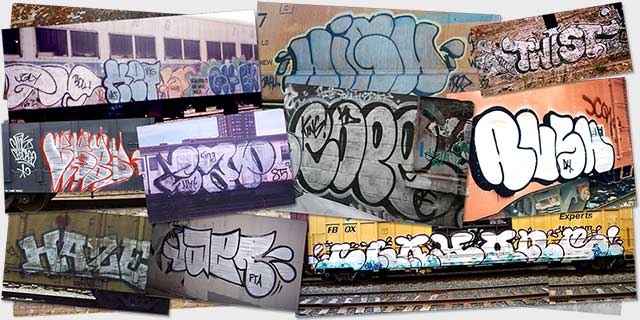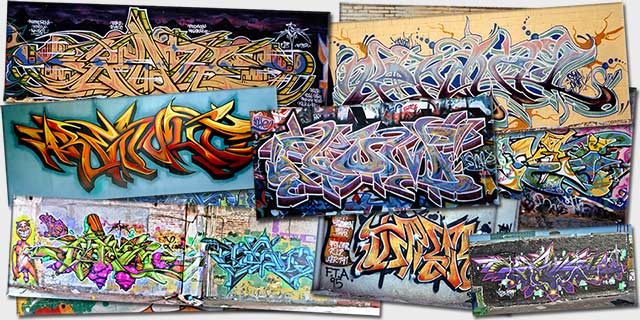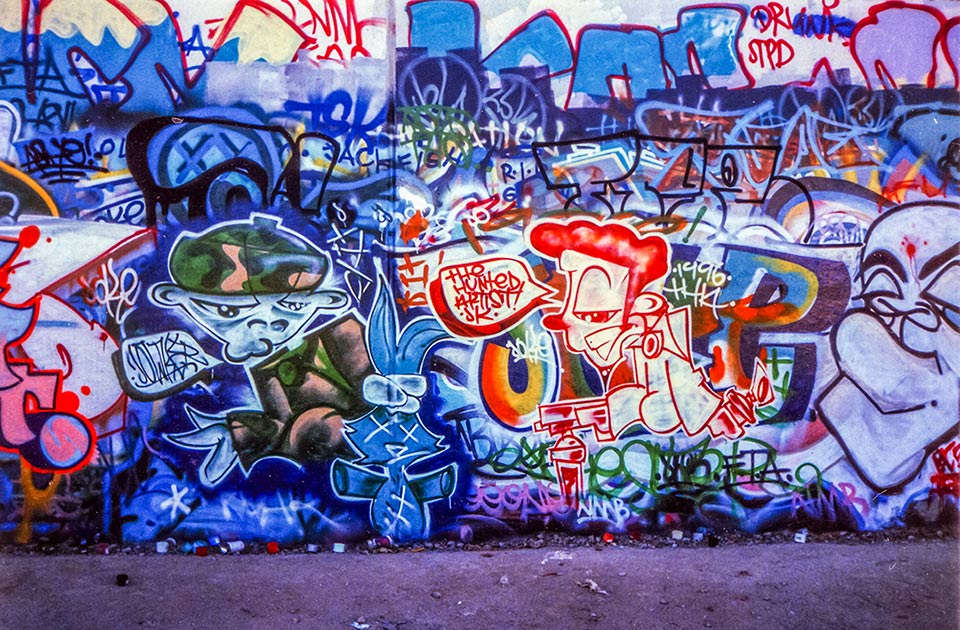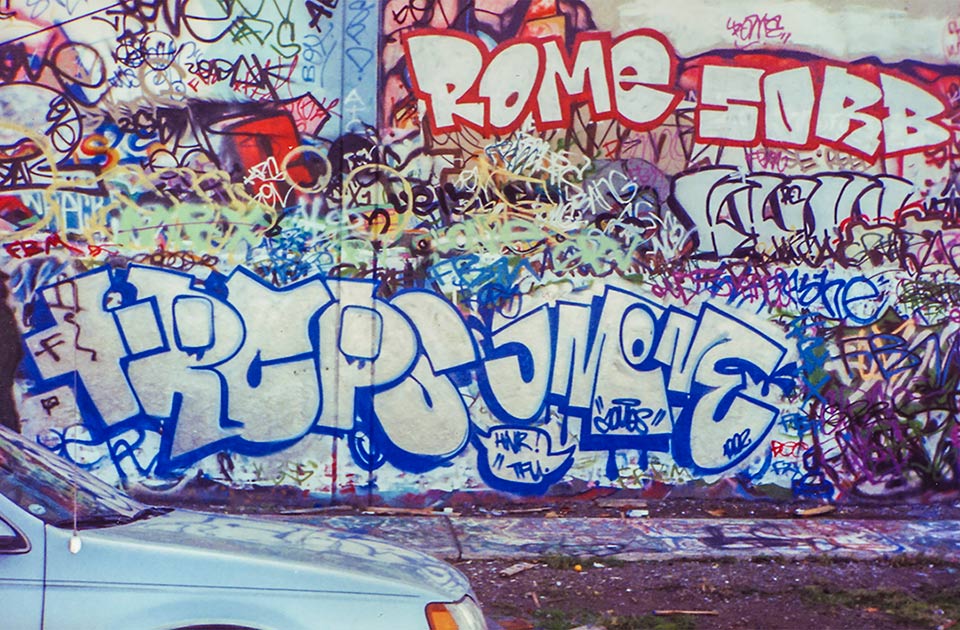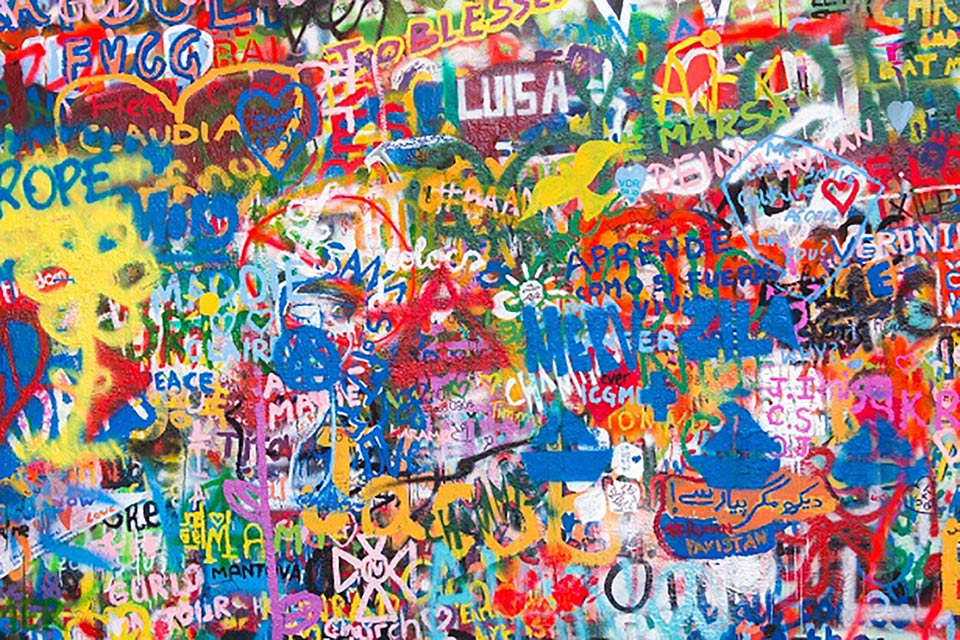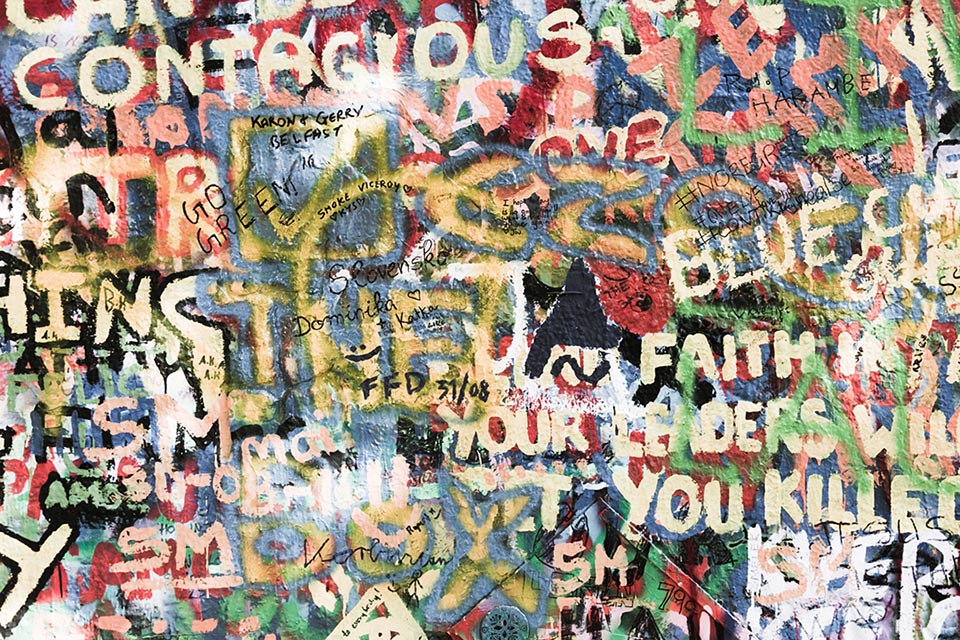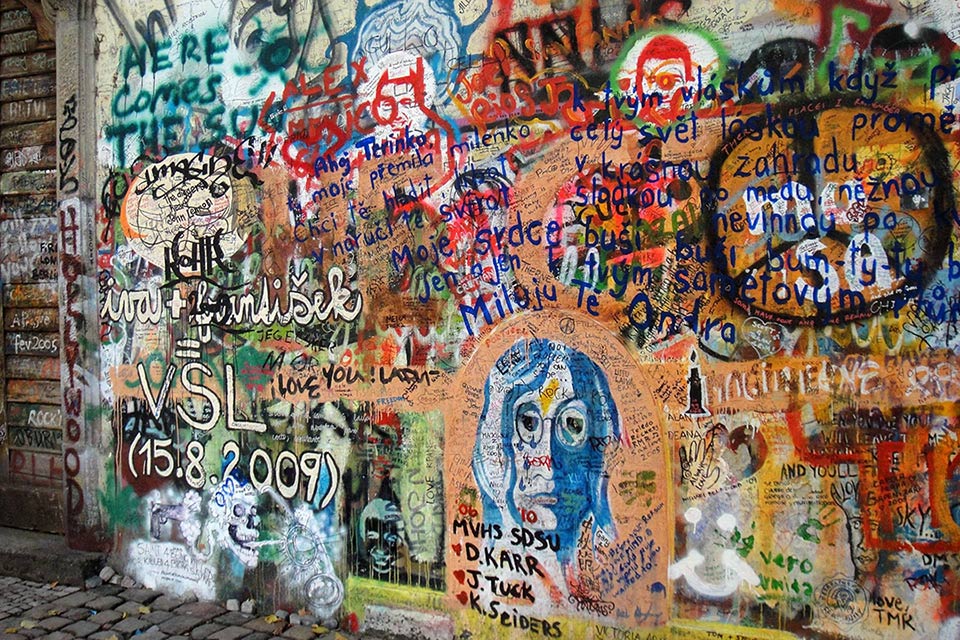A History of Modern Graffiti Typefaces - Part 6 of 6
by: Raseone - Updated 04/17/2024
Defining Graffiti Lettering & Fonts
What is a graffiti font?
Technically, "Graffiti Fonts®" is a brand name like Coke® or Q-Tips®. The trademark was first registered in 2004 & the foundry is dedicated to the design of graffiti style typefaces. The foundry actually predates the genre & was the source of the majority of early graffiti style fonts. More broadly, a graffiti style typeface is any typeface designed to emulate graffiti. While this may seem vague, it's pretty clear to graffiti writers themselves & to generations who grew up with graffiti as a common element of popular culture.
A graffiti style font is any font that can be used to create tags, throws or pieces.
For those unfamiliar with the esoteric & ever-shifting jargon, that statement won't mean much. Within the culture surrounding the graffiti art form (sometimes called "Style Writing") where peole are emersed in the history, traditions & practice, it's a simple and clear statement. Drawing clear bouderies around a graffiti genre in type is admittedly difficult. As a result, most font websites, design blogs etc. have trouble defining a "graffiti" category. Prior to the mid 2000s, there was no "graffiti" genre in type. Most font websites, collections & distributors didn't include a graffiti category.
The subject seems to boggle some so badly that the difficulty in defining "graffiti" seems to metastasize into a difficulty in defining a "font". This results, not only in "graffiti" categories filled with fonts that don't look like graffiti but also in lists of Photoshop & Procreate brushes being intermingled with clip-art, typefaces & hand lettering all labeled as "fonts". To a lot of people a "font" is just any collection of letters. To others, only real, sets of functional typefaces count as "fonts". These days, when you say "font", the vast majority of people will interperet that to mean a digital font that you can install on your computer & type with. Both words "graffiti" & "font" have so much colloquial baggage that an exploration like this could easily be derailed. In order to proceed we have to agree that by "graffiti", we mean the modern art form and by "font", we mean digital typefaces. Now, back to tags, throws and pieces...
"Real" graffiti is mostly defined by it's physical location. If you paint anything on a surface without permission, it's graffiti. If you paint the same thing on a canvas maybe not. Removed from the physical context, a graffiti style must be defined by it's visual & methodological attributes. For an art style that adopts imagery & technique from everywhere & everything, you need to look for things that are unique, innovations, contributions, the elements of the art that are new to the world. Look for the aspects that one would use if they were asked to imitate the style. Graffiti has tons of these identifiers.
In reference to a certain form of "Adult" content, a supreme court justice once said: "I shall not today attempt further to define the kinds of material I understand to be embraced within that shorthand description, and perhaps I could never succeed in intelligibly doing so. But I know it when I see it..."
I know a graffiti style when I see it. Many do. The task here is to intelligibly "define the kinds of material I understand to be embraced within that shorthand description".
Certainly any font designed to look like it was hastily scrawled onto a surface before someone catches you could be called graffiti. Even so, lets dismiss the basic, dictionary definition of the word "graffiti" for a moment & assume we're talking about the modern art form of Graffiti Writring (or Style Writing), tags, pieces, throws etc.. Let's also assume that when we say "font" we're using the modern colloquial definition... actual typefaces, not just styles or even alphabets that someone designed. Since there were no pre-digital, hot metal, graffiti typefaces, we're speaking specifically of installable, digital typeface software in formats like: PostScript, TrueType & OpenType, digital fonts that you can actually type with.
** Note - The nature of digital typefaces is disputed. Some will refer to them as files, databases or packages. The most widely accepted classification is that fonts are software. Many fonts contain scripted, programatic behaviors that would certainly qualify them as software applications.
The Graffiti Motif
To define graffiti typefaces one needs to first define graffiti lettering itself. As described above, the modern art form of graffiti writing has evolved far beyond the simple act of writing or drawing on walls & trains without permission. A complex motif is in play, highly varied but not at all random. The following 3 photos show well established locations frequented by writers of the time. Each shows a hectic layered mass of graffiti art displaying tags, throws, pieces & characters from hundreds of writers built up over the course of years.
Not All Graffiti is "Graffiti"
This next set of 3 images also show layered masses of graffiti on walls built up by many people over years. Similarly the writings & drawings & stencils shown in these images were rendered with spray paint, markers, paint brushes, basically the same array of tools as the previous set of images. Both sets display a wide array of styles, a rainbow of vivid colors & a similar overall effect. The images are similar in many ways. There is however a very obvious difference. Aside from the technical complexity & artisinal merits of the individual bits these sets of images also illustrate the contrast between the random thoughts of passers by & the sport-like practice of graffiti writing as an art in & of itself.
As is true of all art, there is a lot of subjectivity at work. Many fonts will fit cleanly & undeniably into a graffiti genre while many will contain elements of many possible categories making them difficult to define. Not surprisingly, all of this leaves us with no clear & simple way to define a singular, all encompassing graffiti genre within lettering & therefore within type design & typography.
Objective classification of Graffiti lettering styles
We can get much closer & create clearer definitions if we accept the many categories & sub categories of lettering within graffiti itself. These categories have fairly clear divisions some of which are based on tools & techniques used to achieve them while some are based on very clear stylistic definitions. I'll summarize the main first order, functional types in order of complexity here:
Stylistic Categories of Graffiti Lettering
captions
- when legibility and/or multiple lines of text is actually required & space is limited.
tags
- fast, often connected written scripts & signatures, the base level of graffiti lettering.
throws
- fast, optimized drawn & sometimes filled, often rounded &/or connected letters.
blocks
- Usually focus on coverage & size, reductive, sometimes crude in any style.
pieces
- Drawn forms with outlines, fills & often 3D effects, backgrounds & themes.
wildstyles
- Particularly elaborate &/or abstract drawn forms, often heavily interconnected and complex.
3D wildstyles - Realism applied to the unreal, no outlines, sculptural in appearance. Oftem mimic real-world materials such as stone or metal.
productions
- Assemblages of multiple pieces, characters & various elements, often by multiple writers
These categorizations were developed & are accepted by graffiti writers themselves. In reality there are no hard lines between these categories of lettering. They overlap & bleed seamlessly into eachother. Each can be broken into numerous sub-categories. For example: the top-to-bottom "Philly Long Hand" style is a distinctive sub category of handstyles or tags, as are the infinite variations of West Coast Chicano styles and the infinite variations of modernized, gangsterized, blackletter calligraphy or the "bus-flow" styles of San Francisco or New York. Nonetheless, using these basic functional divisions we can achieve some reasonable way to identify, sort & define the categories of graffiti lettering within the context of type.
Captions & tags are both written forms. Throws & blocks are similar animals with similar function. The line between a piece & a wildstyle is blurry at best. 3D realism is a pretty distinct sub-category but it's still just a "piece". Productions are basically just assemblages of pieces. In my experience, writers tend to think of the top-level categories as tags, throws and pieces. This brings us full circle, back to the original conclusion. In the simplest terms, a graffiti style font is essentially any font that can be used to type out tags, throws or pieces.
Here on graffitifonts.com, we currently divide the fonts in our collection Into six categories:
WildStyles ,
Handstyles ,
Throws ,
Blocks ,
Stencils &
Various
Conclusions
Considering the evolution of style over the decades, distinct regional styles & the myriad other factors at work, dozens, even hundreds of clear classifications exist, more classifications of lettering than there currently are fonts to represent. Many concepts useful to the classification of real graffiti art wouldn't be particularly useful in classifying graffiti typefaces. Examples of such concepts might include: Burners, Toy Styles, Whole Cars, Heavens, Scribes, Mops, Silvers, and a multitude of other potential classifications the definitions of which depend on often non-visual or perspective based traits or even traits based on the subjective opinion of the viewer such as quality, location, medium, difficulty level, prominence or originality, traits that can not be objectively defined as elements of the the lettering style itself. Many can not be represented visually, many would not survive translation into a typeface. While this cleaves off some important graffiti concepts, it sharpens the focus on objective traits applicable to type.
Even given the most modern font technology including OpenType scripting that allows dynamic algorithms to create patterns of precisely matched glyphs, layered type systems that enable outlines, fills, details & 3D effects to be deployed automatically or full color, vector SVG or bitmap fonts there are still many fundamental & defining characteristics of modern graffiti lettering that simply can not be used taxonomically to define the lettering styles themselves or any typefaces that may be created to emulate them. Within the motif of graffiti art, a lettering style is organic & alive & presents infinite possible permutations. Like a species of plant, a style has many defining characteristics, often easily identifiable but no two instances are ever identical. Like living things, these styles develop & evolve over time, building increasingly complex systems & increasingly unique traits, adding to their collective DNA as the artist works over a lifetime & as styles are passed down & imitated by others. Like calligraphy or script, graffiti lettering is at odds with the core concept of type & can only ever be partially represented in the vast but ultimately finite universe of mechanical type.
With a basic absense of limits, graffiti lettering will forever defy strict & total categorization. The categorization of typefaces in general similarly blurs & blends a bit around the edges of each category. As it is within the greater world of visual art, graffiti is a microcosm within type, an independent universe. Unlike most other genres of visual art, graffiti started from scratch. Beginning with the artistic prowess of the average child, the art form expanded & evolved rapidly, pulling in any & every influence, technique, tool or other resource it needed to survive, adapt & evolve. This process tends to repeat every time graffiti springs up in a new geographical location, a new medium or media. Predictably, the emergence of graffiti lettering into the domain of mechanical type clearly repeated this process. Early graffiti was primitive. Early graffiti style typefaces were primitive in very similar ways. While scientifically unsatisfying, the intention of the author is a major factor in determining whether or not a font is a "graffiti style font". In type, outside of graffiti's usual context that intent needs to be backed up by actual, visual attributes otherwise, any style could be labeled as a graffiti style. Graffiti writers who know the motif best can usually identify the pressence of its influence at a glance. If there must be a genre then that's how it should be defined, as the graffiti artists, the style writers define it. In the end, any viable definitiion of a graffiti genre within type must center around those core lettering concepts that graffiti introduced into the world; tags, throws & pieces.

